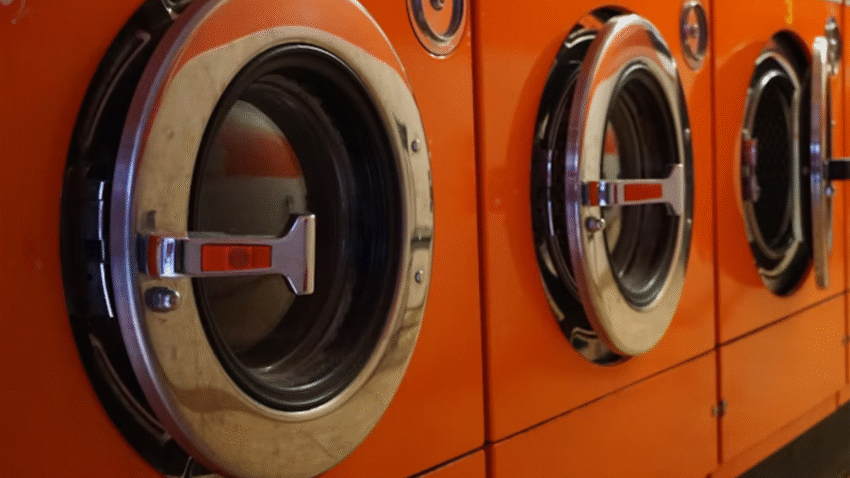Introduction
Your washer and dryer are some of the hardest-working appliances in your home, and replacing them can be expensive. Learning how to maintain a washer and dryer for longer life will help you avoid costly repairs, keep your clothes cleaner, and ensure your laundry routine runs smoothly. With a few simple habits, you can extend the lifespan of both machines and improve their performance year after year.
Why Proper Maintenance Matters for Your Washer and Dryer
Without regular care, washers can develop mold, limescale buildup, and mechanical issues, while dryers are prone to clogged vents, worn belts, and overheating.
Benefits of regular maintenance include:
- Saving money by avoiding early replacement costs.
- Better cleaning and drying results with each load.
- Lower energy bills because the machines run more efficiently.
- Reduced fire risk from dryer lint buildup.
Common laundry-related trouble spots: washer drum, detergent dispenser, dryer lint trap, vent hose, and door seals.
Step-by-Step Guide to Maintaining a Washer and Dryer for Longer Life
1. Clean the Washer Monthly
Run a hot cycle with 2 cups of white vinegar once a month to remove detergent residue, limescale, and odors. Wipe down the drum, door seal, and detergent drawer afterward.
2. Check and Clean the Dryer Lint Trap After Every Load
A clogged lint trap can slow drying time and increase fire risk. Remove lint with your fingers or a soft brush after each cycle.
3. Inspect and Clean the Dryer Vent Every 3–6 Months
Unplug the dryer, disconnect the vent hose, and use a vacuum or dryer vent cleaning kit to remove lint buildup. Ensure the outside vent flap opens freely.
4. Avoid Overloading Both Machines
Too much laundry strains the washer’s motor and suspension system, while overloading the dryer can cause overheating and longer drying times. Follow manufacturer load size recommendations.
5. Leave the Washer Door Open Between Loads
This prevents moisture buildup inside the drum, reducing mold and mildew growth—especially important for front-load washers.
6. Use the Right Detergent and Amount
If you have a high-efficiency washer, use HE detergent to prevent excess suds. Too much detergent can cause buildup that’s hard on the machine and leaves residue on clothes.
7. Level Your Appliances
A washer or dryer that rocks during use can wear out parts faster. Use a level to ensure all four feet are stable on the floor, adjusting as needed.
8. Inspect Hoses and Cords Regularly
Check washer hoses for cracks, bulges, or leaks every few months. Replace hoses every 3–5 years, or sooner if damaged. For dryers, inspect power cords for wear and replace if frayed.
9. Clean Around and Under Appliances
Dust, lint, and debris can accumulate underneath and behind your machines, affecting ventilation and safety. Pull out appliances (carefully) to clean the floor and wall areas at least twice a year.
10. Schedule Professional Servicing as Needed
If you notice strange noises, leaks, or performance issues, have a technician inspect the machines before the problem worsens.
Common Mistakes to Avoid
Mistake 1: Skipping Regular Cleaning
Solution: Set monthly reminders to clean your washer and quarterly reminders for dryer vent maintenance.
Mistake 2: Ignoring Strange Noises
Solution: Investigate and address unusual sounds early to prevent major repairs.
Mistake 3: Using Too Much Detergent
Solution: Follow the dosage on the detergent label—more soap doesn’t mean cleaner clothes.
Mistake 4: Pushing Machines Too Close to the Wall
Solution: Leave at least 4–6 inches behind the washer and dryer for ventilation and to prevent hose or vent damage.
Mistake 5: Letting Small Leaks Go Unchecked
Solution: Even small drips can cause water damage or mold—fix leaks promptly.
Extra Laundry Tips & Hacks
- Install stainless steel braided hoses for your washer—they’re more durable than rubber hoses.
- Use dryer balls to reduce drying time and wear on fabrics.
- Keep a maintenance log to track cleaning dates, hose replacements, and service visits.
- Related guide: Check out our article on “How to Descale a Washing Machine Using Vinegar” for an easy monthly washer cleaning method.
Conclusion
Maintaining your washer and dryer doesn’t have to be complicated. With regular cleaning, proper use, and timely inspections, you can keep your machines running efficiently for years to come. A little effort now can save you hundreds—if not thousands—in repair and replacement costs.
Bonus Tip: If your washer or dryer is in a humid area, use a small dehumidifier nearby to prevent moisture damage to internal parts.
Bookmark this guide to make washer and dryer maintenance a regular part of your home care routine.
